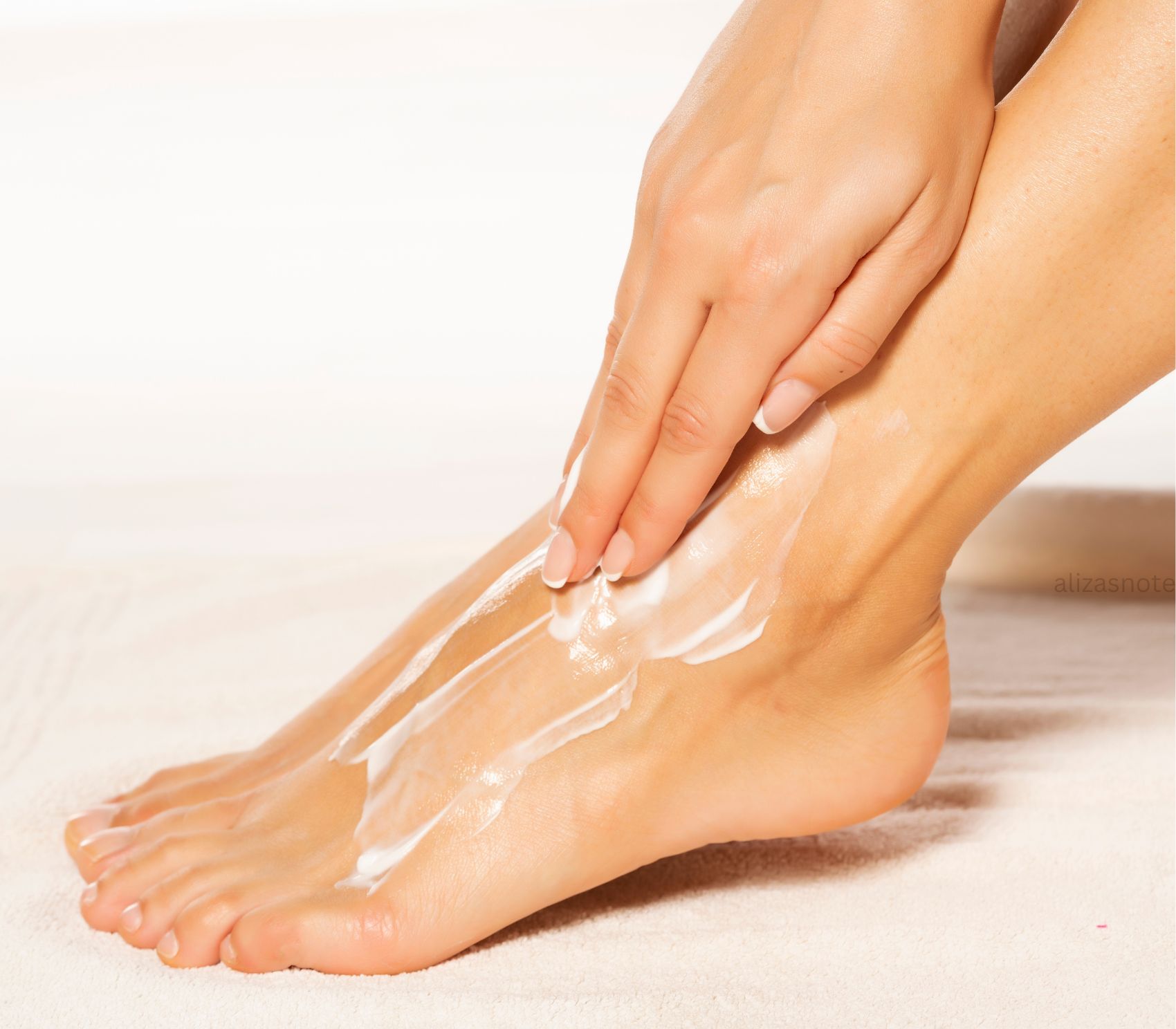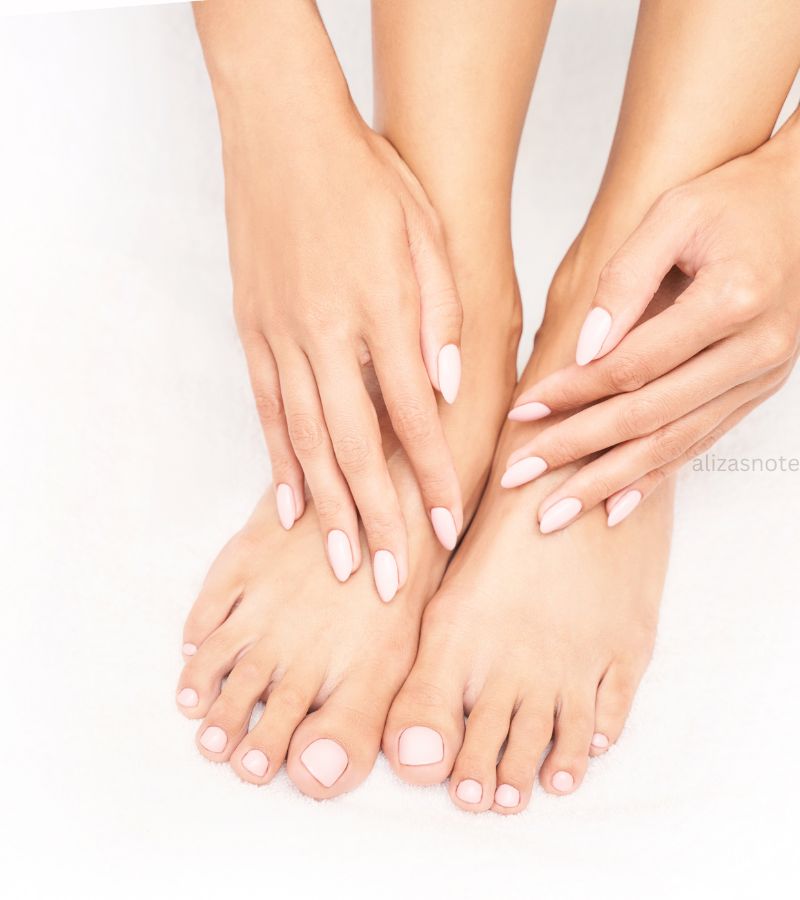Our feet are the unsung heroes of our daily lives, enduring constant activity and pressure.
Despite their importance, they often get overlooked in our self-care routines. One common issue that arises from this neglect is the accumulation of dead skin, leading to discomfort, cracked heels, and even infections if left untreated.
In this blog, we’ll share simple and effective methods about How to clean your feet from dead skin, keeping them healthy, smooth, and comfortable.
Join us as we explore the best practices for foot care and learn how to give your feet the care they deserve!
How To Clean Your Feet From Dead Skin:
Proper foot care is essential for both health and aesthetics. Removing dead skin from your feet not only keeps them looking good but also prevents discomfort and potential infections. Here’s a detailed guide on How to clean your feet from dead skin.
1. Understanding Dead Skin on Feet
Dead skin can accumulate on your feet due to dry skin, friction from shoes, and insufficient foot care. It commonly appears on the heels, soles, and between the toes. Addressing this buildup is key to maintaining healthy feet.
2. Preparation for Foot Cleaning
Before starting, gather the necessary tools and supplies:
A) Ingredients
- Foot scrub or exfoliating product
- Pumice stone or foot file
- Moisturizer or foot cream
- Basin or tub for soaking
- Warm water
- Optional: Epsom salt, vinegar, or essential oils
B) Instructions
Step-by-Step Guide to Clean Your Feet from Dead Skin
Step 1: Drench your feet with warm water for 10-15 minutes. Adding Epsom salt, vinegar, or essential oils can enhance the soak. This step softens the dead skin, making it easier to remove.
Step 2: Exfoliate Your Feet After soaking, gently scrub your feet with a foot scrub or exfoliating product. Concentrate on areas with the most dead skin buildup. This helps slough off dead skin cells, leaving your feet smoother.
Step 3: Utilize a Pumice Stone or Foot Document Straightaway, utilize a pumice stone or foot record to eliminate staying dead skin. Focus on the stone or record round movements, particularly on the heels and soles. Be gentle to avoid over-exfoliation, which can cause irritation.
Step 4: Rinse and Dry Your Feet Thoroughly rinse your feet with clean water to remove any leftover dead skin and exfoliating product. Pat your feet dry with a clean towel, ensuring no moisture remains between your toes to prevent fungal infections.
Step 5: Moisturize Your Feet Apply a generous amount of moisturizer or foot cream to your feet. This crucial step hydrates the skin and prevents future dead skin buildup. Choose a moisturizer suited to your skin type for the best results.
Read More: Enjoy Christmas Pedicure Ideas
Additional Tips:
- Regular Foot Care Routine: Incorporate a weekly or bi-weekly foot care routine to keep your feet in top condition.
- Wear Appropriate Footwear: Opt for shoes that provide good support and reduce friction to minimize dead skin formation.
- Keep Feet Clean and Dry: Always keep your feet clean and dry to prevent bacterial and fungal growth.
- Foot Masks and Treatments: Use foot masks or treatments periodically for extra care and nourishment.
Home Remedies for Dead Skin Removal:
Natural ingredients can also be used to make DIY foot scrubs and masks. Effective home remedies include:
- Lemon Juice: Its acidic properties help soften dead skin.
- Honey: A characteristic lotion and antibacterial agen.
- Oatmeal: Acts as a gentle exfoliant when mixed with water.
Seek Professional Help:
Consult a professional if you experience persistent pain, infections, or severe calluses. They can provide treatments such as pedicures or medical foot care to address these issues effectively.
Caring for your feet and removing dead skin is a simple yet important aspect of personal hygiene, you can ensure your feet remain healthy, soft, and smooth.
FAQs:
Q: how to clean the dead skin off your feet?
A: Exfoliate and remove dead skin once a week or as needed based on your skin type and condition.
Q: Can I use a razor to remove dead skin from my feet?
A: No, using a razor can cause cuts and infections. Stick to safe tools like pumice stones and foot files.
Q: What type of moisturizer is best for my feet?
A: Look for a thick, hydrating foot cream with ingredients like urea, glycerin, or shea butter for the best results.
Last Call:
- Regularly removing dead skin from your feet is a simple yet essential part of personal hygiene.
- Maintaining a regular foot care routine, wearing appropriate footwear, and using occasional home remedies or seeking professional treatments will ensure your feet remain in top condition.
- Healthy feet not only look and feel better but also prevent discomfort and potential infections. Incorporating foot care into your hygiene routine will help you step forward with confidence and comfort.
- A little effort can go a long way in achieving and maintaining beautiful, healthy feet.
Call to action:
- Thank you for reading! We hope these tips help you achieve the best results.
- Feel free to share your own foot care routines and experiences in the comments, and don’t forget to subscribe to our blog for more health and wellness tips.
- Join on Pinterest for more insights.



